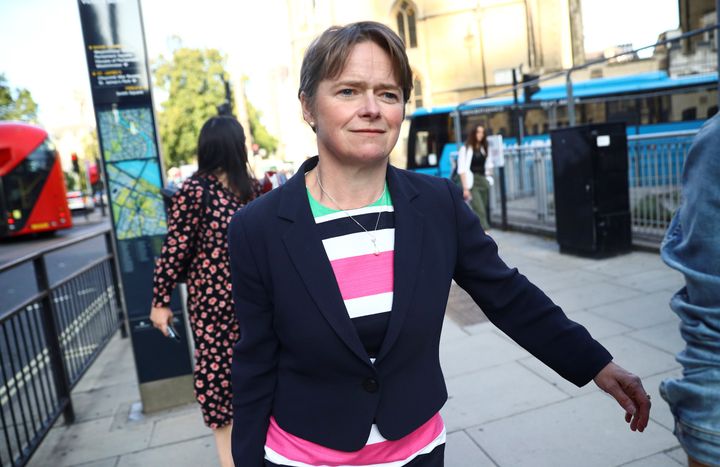
You’re reading The Waugh Zone, our daily politics briefing. Sign up now to get it by email in the evening.
Ever since its launch last year, NHS Test and Trace has been dogged by controversy. From the outset, plenty of people within the health service were unhappy that their brand had been tagged shamelessly onto a service that had no direct link to the NHS at all.
That discontent continued as swarms of expensive private consultants were soon packing Whitehall and outsourced providers Serco and Sitel were used to set up call centres. The service’s 24-hour test turnaround times were poor (and even despite recent improvements are not the 100% promised by the PM for last June). Its contact tracing rates were even worse, with local public health chiefs puzzled why they weren’t used from the get-go.
The biggest success of the system has been a dramatic expansion of testing capacity, both public and private, as well as some partnerships with universities. The “gold standard” PCR testing capacity is now nearly 800,000 a day, backed up by millions of rapid result lateral flow tests. As for numbers of tests actually conducted, there were around 200,000 PCR tests a day last week and 240,000 lateral flow tests.
From a standing start, that capacity is certainly impressive. It has meant that the system could cope with the dramatic influx of infections in this latest Covid third wave, powered by the new variant that spread like wildfire across the country in December and January. Centralised contact tracing, backed up by more local tracing, has also had the capacity to absorb the surge.
Dido Harding is pleased that the last few weeks have seen big improvements in test turnaround times and insiders claim this is logistical and other changes finally flowing through. Sceptics suggest it stems largely because of the big falls in cases creating more lab time for quicker tests. Similarly, the big uptick in contact tracing is down to a change in methodology of ringing just one person per household rather than every member.
But controversy is back today in the form of Harding’s claims about the “material impact” her service is having on the R number. As we report here, a string of statisticians and academics have queried Test and Trace’s frankly bizarre calculation of its performance by comparing it to a scenario where no one isolated at all.
And even its own business plan had a footnote (always watch the small print, folks) that revealed it was assuming that 90% of the reduction in transmission stemmed from people self quarantining as soon as they get symptoms. That’s even before they get a test or interact with Test and Trace contact tracers.
“A large proportion of the modelled transmission reduction could be achieved from the public guidance to isolate after symptom onset alone,” it says. So it’s worth asking, as Labour now is, whether it’s worth investing a fraction of the £22bn Test and Trace budget on much better public information campaigns about isolating as soon as you get symptoms (and telling your contacts to isolate too) – and on paying people more to stay indoors for 10 days.
The problem for Harding is that her claims about the impact on R remain opaque, not least because the technical annexe has not been made public (her Business Plan promised to publish it “shortly” back in November), and we have no idea who her “external” validators are. That’s why Greg Clark’s Commons science and tech committee today insisted on publication and summoned her back to give evidence.
It’s worth saying that the overwhelming majority of Test and Trace’s budget is spent on testing not tracing. That’s in part because labs and tests are naturally expensive things to run. But if you really want to make an impact on the virus, maybe more cash on dedicated, experienced contact tracing teams locally would be sensible.
Despite all the criticism, Harding is going nowhere. She is set to become chair of the brand new National Institute for Health Protection that formally constitutes in April (and will be operational from October). Indeed, there are renewed murmurs in Whitehall that the job is a stepping stone to her getting the really top job as the next chief exec of the NHS, replacing Sir Simon Stevens.
Given that Stevens is on a standard contract and has no fixed term, it would be difficult to replace him without it looking like he was fired. Much more importantly, why fire someone whose service has not only coped amazingly with three Covid waves but which has also delivered the phenomenally successful rollout of the vaccine programme?
Today, there was a leak of the long-awaited health and social care white paper. Rather worryingly to some in the health service, it suggests giving ministers more direct control and giving the NHS less operational independence. In this pandemic, things the NHS has control over (eg vaccination rollout) tend to have gone well, whereas things it has no control over (Test and Trace/PPE supply) less well.
Still, as I say, the admiration for Dido Harding within No.10 and from Matt Hancock shows no signs of abating. It is not fanciful to imagine an NHS with less operational independence, while having a Tory peer as its boss, working closely with a health secretary who appointed her without competition to her previous two health jobs. We can only hope the statistics will be more sound.
